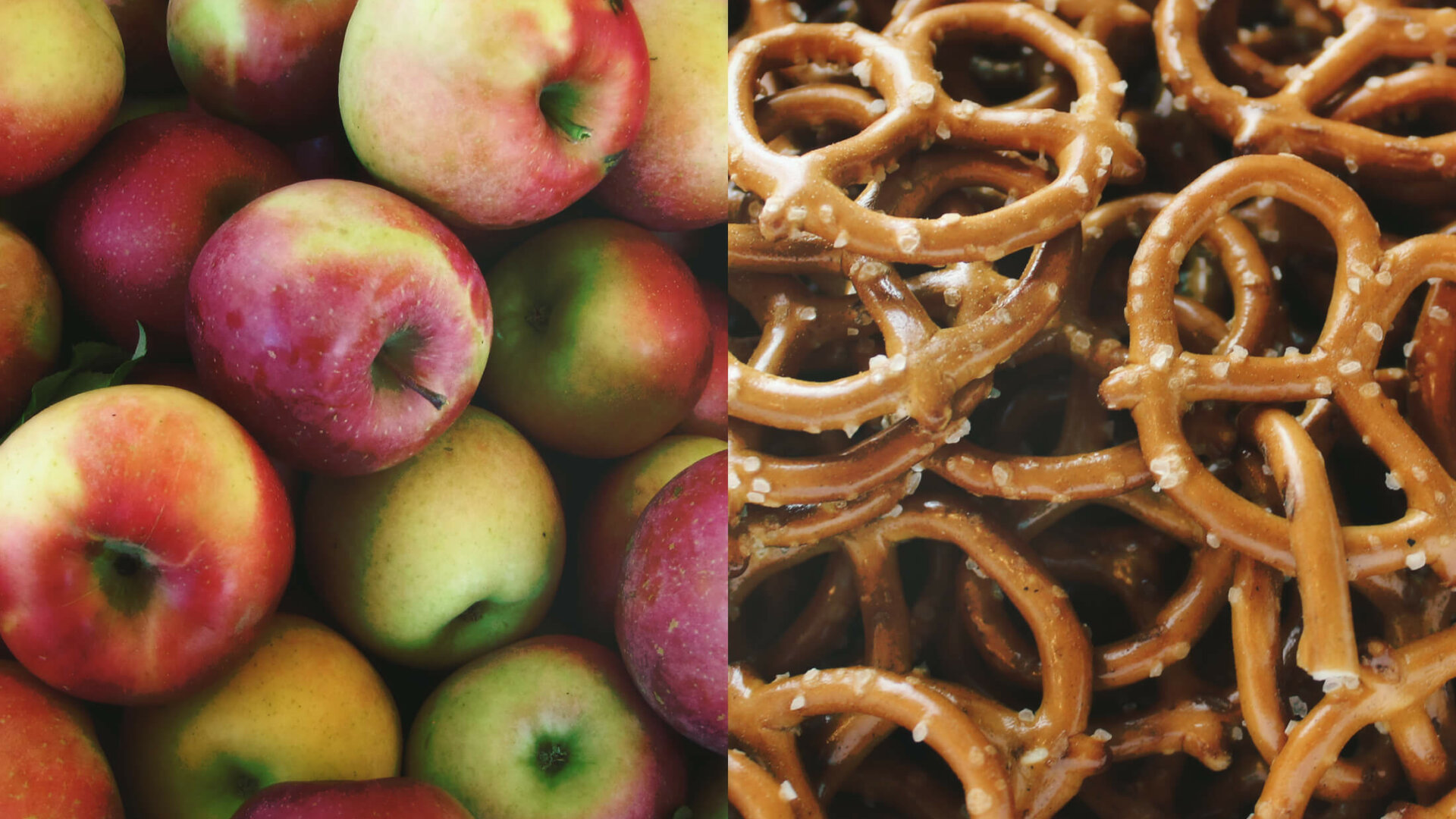There is a lot of information available about the glycemic index (GI) and most of what you read will indicate that a low GI diet has various advantages to one’s health. But is it as black and white as it’s made out to be? Does it just come down to low GI being good and high GI being bad?
First, what is glycemic index? In simple terms, the glycemic index is a ranking system of 0-100 that is measured by any one particular foods ability to raise blood sugar levels after eating. It was designed to help in situations which glucose tolerance is impaired, like diabetes, to easier control their blood sugar levels. Large increases in blood sugar levels are also believed to be part of controlling hunger and satiety. Other purposes are to prevent chronic western diseases and controlling bodyweight better in a low-GI compared to a high-GI diet.
To measure it, the subject consumes a food that contains a fixed amount of carbohydrates; usually 50g. This means that if pure sugar is eaten, the volume is much smaller than if carrots, for example, are eaten. Foods that are considered to have a high GI are digested and absorbed rapidly and raise blood sugar quickly. Low-GI on the other hand, is supposed to have a slower digestion and absorption rate, thus maintain more stable blood sugar levels. White bread or plain sugar is most often used as a reference food with a score of 100.
Foods low in GI is thus supposed to be superior in terms of controlling hunger, ad libitum energy intake, body composition and weight, and overall health.
For a list of different carb sources and their glycemic index, see table 1 here. Note that this is food eaten in isolation – not something that happens often in real life.
Is the glycemic index so straightforward?
No, there are various problems with it. It’s not very reliable because responses are highly individual. Not only between people but also in the same person on different days [1]. In some, however, it seems to be more reliable than in others. If we look into the data, specifically at white bread, the highest response was a GI of 140, while in another subject it was only 60. In potatoes, the results were also of high variability, with a GI score ranging from about 185 down to about 40. Other data has also found a low reliability within and between subjects [2].
Secondly, very few foods are eaten in isolation. Fat and protein added to the meal will influence the rate of digestion, absorption and hence blood glucose response. Some researchers have tried to create a formula to estimate the glycemic index of an entire meal [3]. This, however, seemed to overestimate the GI of the meals by between 22 – 50%. Thus, there are still limitations.
Glycemic index and appetite
Contrary to popular belief, GI does not seem to effect appetite in most studies [4][5][6][7][8][9][10]. However, some have found a higher satiety/fullness response with a lower GI diet [11], while others have found a higher satiety/fullness score with a higher GI diet [12]. The impact of GI on appetite is therefore non-existent or at best very weak. What’s more, a meta-analysis which compared high vs low-GI breakfast on subsequent short-term energy intake found no difference [13].
What about long-term studies?
In studies >10 weeks, comparing low-GI diets with high-GI diets, much of the data shows there is not any difference in bodyweight [7][8][14][15][16][17]. However, a meta-analysis from 2008 showed more weight loss in the low GI subjects [18] which is also supported by other studies [19]. What’s more, a low-GI diet has shown to have an advantage in regards with LDL- and HDL cholesterol in overweight individuals [8][20] in addition to improved insulin sensitivity (only in obese) [18]. Furthermore, cardiovascular disease risk reduction [21], lower triglyceride levels [15], lower inflammation [22] and decreases in gene expression of stress and inflammation [23]. In contrast, Jebb et al (2010) found no difference in overweight individuals when it came to insulin sensitivity and blood pressure between the different GI diets [24].
Practical application:
This does not mean one should eat sugar instead of vegetables – don’t change your carb sources to candy just yet. Foods that are highly processed and low in fiber tend to correlate with a high GI diet. This means it may be the food quality that is the reason for some research showing a detrimental effect of a high GI diet, rather than GI itself.
The glycemic index should therefore not dictate your food choices, it’s not reliable enough, difficult to apply in practice, and the bigger picture is missing. In the case of sugar vs vegetables – vegetables have far more volume, fiber, water, micronutrients and are less calorically dense than sugar. A calorie from carb is a calorie from carb, but for your health the source is important! So choose your food sources wisely – whole foods before processed foods, but you can always make some room for sugar for increased flexibility in your diet.
References
- Williams SM, Venn BJ, Perry T, Brown R, Wallace A, Mann JI, et al. Another approach to estimating the reliability of glycaemic index. Br J Nutr. 2008 Aug;100(2):364–372.
- Hirsch S, Barrera G, Leiva L, de la Maza MP, Bunout D. Variability of glycemic and insulin response to a standard meal, within and between healthy subjects. Nutr Hosp. 2013 Apr;28(2):541–4.
- Dodd H, Williams S, Brown R, Venn B. Calculating meal glycemic index by using measured and published food values compared with directly measured meal glycemic index. Am J Clin Nutr. 2011 Oct;94(4):992–996.
- Holt SH, Miller JC, Petocz P, Farmakalidis E. A satiety index of common foods. Eur J Clin Nutr. 1995 Sep;49(9):675–90.
- Holt SH, Brand Miller JC, Petocz P. Interrelationships among postprandial satiety, glucose and insulin responses and changes in subsequent food intake. Eur J Clin Nutr. 1996 Dec;50(12):788–97.
- Flint A, Gregersen NT, Gluud LL, Møller BK, Raben A, Tetens I, et al. Associations between postprandial insulin and blood glucose responses, appetite sensations and energy intake in normal weight and overweight individuals: a meta-analysis of test meal studies. Br J Nutr. 2007 Jul;98(1):17–25.
- Aston LM, Stokes CS, Jebb SA. No effect of a diet with a reduced glycaemic index on satiety, energy intake and body weight in overweight and obese women. Int J Obes 2005. 2008 Jan;32(1):160–165.
- Sloth B, Krog-Mikkelsen I, Flint A, Tetens I, Björck I, Vinoy S, et al. No difference in body weight decrease between a low-glycemic-index and a high-glycemic-index diet but reduced LDL cholesterol after 10-wk ad libitum intake of the low-glycemic-index diet. Am J Clin Nutr. 2004 Aug;80(2):337–347.
- Alfenas RCG, Mattes RD. Influence of glycemic index/load on glycemic response, appetite, and food intake in healthy humans. Diabetes Care. 2005 Sep;28(9):2123–9.
- Gonzalez-Anton C, Rico MC, Sanchez-Rodriguez E, Ruiz-Lopez MD, Gil A, Mesa MD. Glycemic responses, appetite ratings and gastrointestinal hormone responses of most common breads consumed in Spain. A randomized control trial in healthy humans. Nutrients. 2015 Jun;7(6):4033–53.
- Krog-Mikkelsen I, Sloth B, Dimitrov D, Tetens I, Björck I, Flint A, et al. A low glycemic index diet does not affect postprandial energy metabolism but decreases postprandial insulinemia and increases fullness ratings in healthy women. J Nutr. 2011 Sep;141(9):1679–84.
- Wu M-YY, Bowtell JL, Williams CA. Glycaemic index of meals affects appetite sensation but not energy balance in active males. Eur J Nutr. 2014 Feb;53(1):309–319.
- Sun F-H, Li C, Zhang Y-J, Wong SH-S, Wang L. Effect of Glycemic Index of Breakfast on Energy Intake at Subsequent Meal among Healthy People: A Meta-Analysis. Nutrients. 2016 Jan 4;8(1):37.
- Saris WH, Astrup A, Prentice AM, Zunft HJ, Formiguera X, Verboeket-van de Venne WP, et al. Randomized controlled trial of changes in dietary carbohydrate/fat ratio and simple vs complex carbohydrates on body weight and blood lipids: the CARMEN study. The Carbohydrate Ratio Management in European National diets. Int J Obes Relat Metab Disord J Int Assoc Study Obes. 2000 Oct;24(10):1310–1318.
- Sichieri R, Moura AS, Genelhu V, Hu F, Willett WC. An 18-mo randomized trial of a low-glycemic-index diet and weight change in Brazilian women. Am J Clin Nutr. 2007 Sep;86(3):707–13.
- Wolever TMS, Mehling C. Long-term effect of varying the source or amount of dietary carbohydrate on postprandial plasma glucose, insulin, triacylglycerol, and free fatty acid concentrations in subjects with impaired glucose tolerance. Am J Clin Nutr. 2003 Mar;77(3):612–21.
- Rouhani MH, Kelishadi R, Hashemipour M, Esmaillzadeh A, Azadbakht L. The effect of low glycemic index diet on body weight status and blood pressure in overweight adolescent girls: a randomized clinical trial. Nutr Res Pract. 2013 Oct;7(5):385–92.
- Livesey G, Taylor R, Hulshof T, Howlett J. Glycemic response and health–a systematic review and meta-analysis: relations between dietary glycemic properties and health outcomes. Am J Clin Nutr [Internet]. 2008 Jan;87(1). Available from: http://view.ncbi.nlm.nih.gov/pubmed/18175766
- Juanola-Falgarona M, Salas-Salvadó J, Ibarrola-Jurado N, Rabassa-Soler A, Díaz-López A, Guasch-Ferré M, et al. Effect of the glycemic index of the diet on weight loss, modulation of satiety, inflammation, and other metabolic risk factors: a randomized controlled trial. Am J Clin Nutr. 2014 Jun 1;ajcn.081216.
- Maki KC, Slavin JL, Rains TM, Kris-Etherton PM. Limitations of Observational Evidence: Implications for Evidence-Based Dietary Recommendations. Adv Nutr Int Rev J. 2014 Jan 1;5(1):7–15.
- McMillan-Price J, Petocz P, Atkinson F, O’neill K, Samman S, Steinbeck K, et al. Comparison of 4 diets of varying glycemic load on weight loss and cardiovascular risk reduction in overweight and obese young adults: a randomized controlled trial. Arch Intern Med. 2006 Jul 24;166(14):1466–75.
- Rouhani MH, Kelishadi R, Hashemipour M, Esmaillzadeh A, Surkan PJ, Keshavarz A, et al. The Impact of a Low Glycemic Index Diet on Inflammatory Markers and Serum Adiponectin Concentration in Adolescent Overweight and Obese Girls: A Randomized Clinical Trial. Horm Metab Res Horm Stoffwechselforschung Horm Métabolisme. 2016 Apr;48(4):251–6.
- Kallio P, Kolehmainen M, Laaksonen DE, Kekäläinen J, Salopuro T, Sivenius K, et al. Dietary carbohydrate modification induces alterations in gene expression in abdominal subcutaneous adipose tissue in persons with the metabolic syndrome: the FUNGENUT Study. Am J Clin Nutr. 2007 May;85(5):1417–27.
- Jebb SA, Lovegrove JA, Griffin BA, Frost GS, Moore CS, Chatfield MD, et al. Effect of changing the amount and type of fat and carbohydrate on insulin sensitivity and cardiovascular risk: the RISCK (Reading, Imperial, Surrey, Cambridge, and Kings) trial. Am J Clin Nutr. 2010 Oct 1;ajcn.29096.

